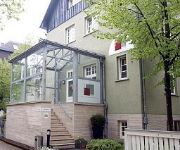Facts and Data
Webpages:
Official Unesco Page
Bauhaus Dessau Foundation
Haus Am Horn (in German)
The Dessau Master's Houses
The Bauhaus-Universität Weimar
Dessau-Roßlau (in German)
UNESCO Commission of Germany
Bauhausstätten in Weimar und Dessau (Deutsche UNESCO-Kommission)(german only)
Basis Data:
Unesco World heritage since: 1996
Size of heritage:
Coordinates:
Longitude: 11,329°
Latitude: 50,975°
Summary
Between 1919 and 1933, the Bauhaus School, based first in Weimar and then in Dessau, revolutionized architectural and aesthetic concepts and practices. The buildings put up and decorated by the school's professors (Walter Gropius, Hannes Meyer, Laszlo Moholy-Nagy and Wassily Kandinsky) launched the Modern Movement, which shaped much of the architecture of the 20th century.
Location on Map
Show bigger map on Openstreetmap
Introduction
The UNESCO World Heritage site "Bauhaus and its Sites in Weimar and Dessau" is located in the states of Saxony-Anhalt and Thuringia in Germany. This site encompasses several buildings and locations that played a significant role in the development of the Bauhaus movement, a revolutionary art and design school that emerged in the early 20th century.History
The Bauhaus movement was founded in 1919 by architect Walter Gropius in Weimar, Germany. Gropius aimed to create a school that would bridge the gap between art and industry, combining craftsmanship with modern technology. The Bauhaus sought to break away from traditional artistic conventions and embrace functional design principles. The first Bauhaus school was established in Weimar, and it quickly gained recognition for its innovative approach to art education. However, due to political pressure and financial constraints, the school relocated to Dessau in 1925. The move to Dessau allowed the Bauhaus to expand its influence and further develop its ideas.Current State
The UNESCO World Heritage site "Bauhaus and its Sites in Weimar and Dessau" includes several key locations that played a crucial role in the development of the Bauhaus movement. In Weimar, visitors can explore the former Bauhaus school building, which now houses the Bauhaus Museum. This museum showcases a vast collection of Bauhaus artifacts, including furniture, ceramics, and architectural models. The museum provides a comprehensive overview of the school's history and its impact on modern design. Another significant site in Weimar is the Haus am Horn, a prototype house designed by Georg Muche and Adolf Meyer. This house exemplifies the Bauhaus principles of functional design and simplicity. Visitors can tour the interior and witness firsthand the innovative ideas that shaped the movement. In Dessau, the Bauhaus Building stands as an iconic symbol of the movement. Designed by Walter Gropius, this building served as the school's main facility during its time in Dessau. Its distinctive design, characterized by clean lines and geometric shapes, reflects the Bauhaus philosophy. Today, the building houses the Bauhaus Dessau Foundation, which offers exhibitions, workshops, and educational programs. The Masters' Houses in Dessau are another essential component of the World Heritage site. These houses were designed by various Bauhaus masters, including Gropius himself. Each house reflects the individual style and vision of its architect, showcasing the diversity within the Bauhaus movement. Overall, the UNESCO World Heritage site "Bauhaus and its Sites in Weimar and Dessau" provides a comprehensive and immersive experience into the world of the Bauhaus movement. It allows visitors to understand the historical context, explore the architectural achievements, and appreciate the lasting impact of this revolutionary art and design school.Hotels and places to stay
Weimar a Luxury Collection Hotel Hotel Elephant
Grande Albergo Giancarlo
Dorint Am Goethepark
Art Hotel Weimar
Fürstenhof am Bauhaus
Amalienhof
Villa Hentzel
HotelPension am Goethehaus
Am Frauenplan
Havana Club und Pension
Videos from the area
Videos provided by Youtube are under the copyright of their owners.


















